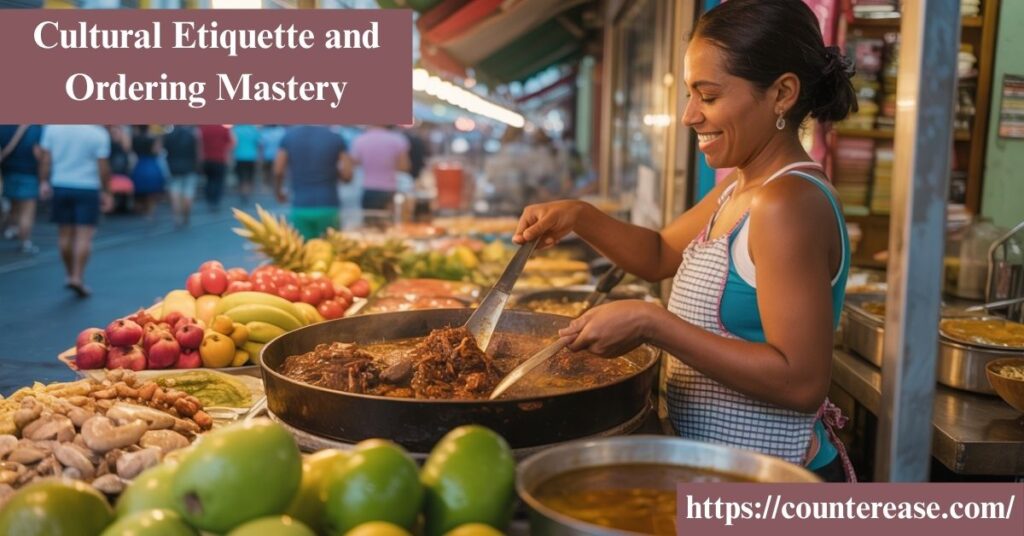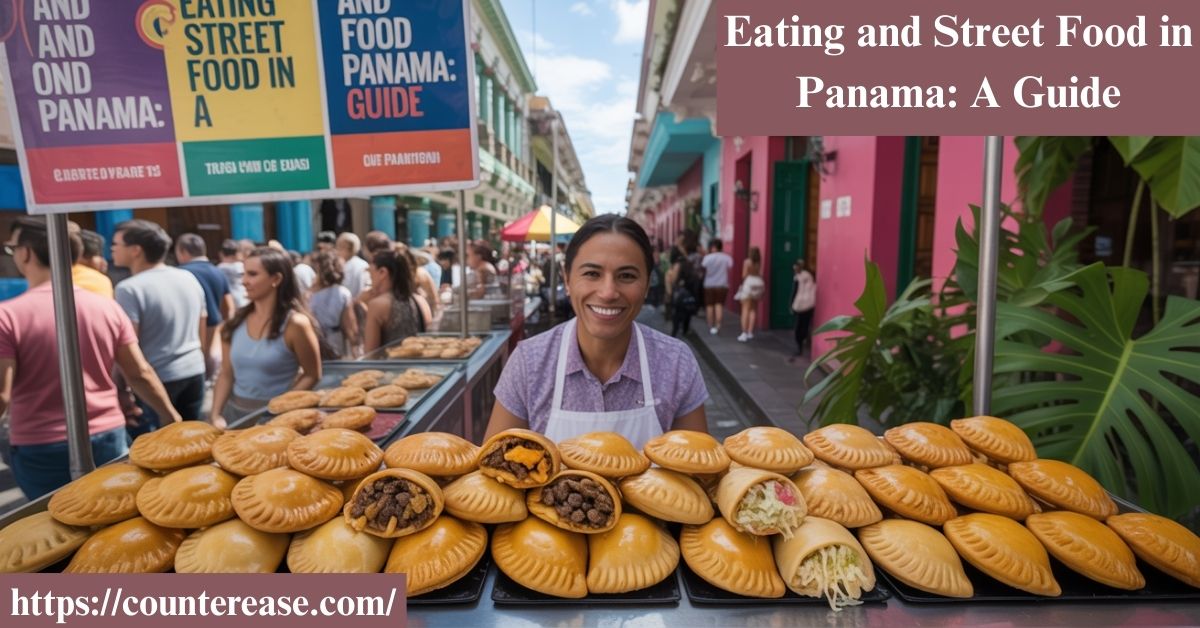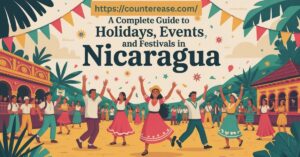Eating-street-food-Panama refers to experiencing the country’s vibrant flavors through simple yet authentic dishes served by local vendors. It’s not just about grabbing a quick bite; eating street food panama’s about enjoying meals that carry Panama’s cultural essence. From bustling city corners to quiet coastal towns, these foods reflect the nation’s history, ingredients, and traditions in every mouthful.
The real charm lies in the irresistible variety waiting at every turn. Imagine golden patacones sizzling in oil, sweet raspados melting under the tropical sun, or empanadas stuffed with savory fillings that instantly satisfy. Each stop feels like stepping into Panama’s culinary heartbeat, where colors, aromas, and flavors collide in the most delightful way.
What makes eating-street-food-panama unforgettable is its mix of affordability, freshness, and authenticity. Whether it’s hearty sancocho shared among friends or a quick tamal wrapped in banana leaves, every bite reveals a story. This eating street food panama adventure isn’t just a meal—it’s a journey through Panama’s diverse identity.
Your Ultimate Guide to Authentic Flavors and Hidden Culinary Gems
Panama’s street food scene explodes with flavors that’ll knock your socks off. This narrow strip of land connecting two continents has created something magical – a food culture where Caribbean spice meets Latin comfort and Asian technique dances with indigenous wisdom.
Forget everything you think you know about Central American cuisine. Panama’s culinary identity goes way deeper than rice and beans.
Panama’s Hidden Culinary Revolution
Street food in Panama costs pennies but delivers gourmet experiences. You’ll spend $1-4 per dish and walk away stuffed with flavors you never knew existed.
See Also: A Travel Guide to Guatemala City
The magic happens because Panama sits at the crossroads of everything. Ships from Asia dock here. Caribbean cultures flourish on one coast while Pacific traditions thrive on the other. Indigenous communities still cook with ancient techniques their grandmothers taught them.

This strategic trade hub influence created fusion before fusion was cool. Chinese railroad workers brought wok techniques in the 1850s. Lebanese merchants introduced Middle Eastern spices. African slaves carried Caribbean cooking secrets. Spanish colonizers added European flair.
Local cuisine evolved from necessity. Workers needed cheap, filling meals. Street vendors delivered exactly that – but with an unexpected twist of sophistication.
The DNA of Panamanian Street Food Culture
Historical Influences Shaping Today’s Plates
Panamanian food scene tells Panama’s story through every bite. The Guaymí and Kuna people contributed corn-based dishes and tropical fruit preparations that still dominate street corners today.
Spanish colonizers brought livestock and wheat. But the real game-changer? Chinese immigrants building the railroad. They introduced stir-frying techniques and soy-based seasonings that transformed local ingredients.
International influences layered on thick. Lebanese merchants settling in Colón brought spice blends. Jewish immigrants fleeing Europe added baking techniques. Each wave of newcomers left culinary fingerprints.
The result? Authentic Panamanian food that tastes like nowhere else on earth.
Street Food Economics: Budget Traveler’s Paradise
Food prices in Panama make your wallet happy:
| Food Type | Price Range | Examples |
|---|---|---|
| Street Food | $1-$3 | Empanadas, patacones, raspados |
| Fondas (local joints) | $4-$8 | Full meals with sides |
| Upscale restaurants | $15-$30 | Gourmet interpretations |
Affordable options don’t mean compromising quality. Street vendors use fresh local ingredients and time-tested recipes passed down through generations.
Payment works cash-only at most stalls. Keep small bills handy – vendors rarely have change for twenties.
Unmissable Street Food Champions
Savory Powerhouses
Empanadas rule Panama’s street food kingdom. These aren’t your typical Mexican empanadas. Panamanian empanadas use corn masa instead of wheat flour, creating a completely different texture and flavor profile.
“The secret is in the masa,” explains María González, a third-generation empanada maker in Casco Viejo. “We grind the corn fresh every morning. Industrial masa tastes like cardboard.”
Carimañolas deserve your immediate attention. These torpedo-shaped yuca fritters get stuffed with seasoned ground beef or cheese, then deep-fried until golden. The crispy exterior gives way to creamy yuca and savory filling. Pure comfort food genius.
Patacones appear everywhere for good reason. Twice-fried green plantains create the perfect base for toppings. Vendors pile on hogao (tomato-onion sauce), cheese, beans, or meat. Each bite delivers satisfying crunch followed by sweet plantain flavor.
Sancocho transforms into street food on weekends. This chicken-and-yuca soup in eating street food panama, traditionally feeds families, but enterprising vendors ladle it into cups for on-the-go consumption. The broth tastes like pure comfort.
Sweet Street Sensations
Raspados save lives in Panama’s tropical heat. Shaved ice with fruit syrup and condensed milk sounds simple but tastes like heaven. Vendors shave ice by hand, then drizzle on passion fruit, mango, or coconut syrups.
Dulce de leche shows up in unexpected places. Street vendors stuff it into empanadas, spread it on churros, or serve it over rice pudding. The caramelized sweetness balances Panama’s spicy dishes perfectly.
Churros get the Panamanian treatment with dulce de leche filling instead of plain cinnamon sugar. Vendors fry them fresh throughout the day, ensuring maximum crispiness.
Regional Street Food Mapping
Panama City: Urban Fusion Hub
Panama City concentrates the country’s best street food highlights in walkable neighborhoods.
Casco Viejo leads the gourmet street food revival. Historic buildings house vendors selling elevated versions of traditional dishes. You’ll pay slightly more but get restaurant-quality preparations.
Mercado del Marisco dominates seafood conversations. This waterfront market serves the capital’s best ceviche directly from fishing boats. Seafood marinated in lime doesn’t get fresher than this.
Via Argentina transforms into food truck paradise after sunset. Mobile vendors park along this main thoroughfare, offering everything from traditional tamales to Korean-Panamanian fusion tacos.
Caribbean Coast Adventures
Bocas del Toro showcases Afro-Caribbean influences you won’t find elsewhere in Central America.
Rondón represents the ultimate Caribbean comfort food. This coconut-based seafood stew combines whatever fishermen caught that morning with yuca, plantains, and Caribbean spices. The coconut milk softens the heat while adding richness.
Johnny Cakes provide the perfect vehicle for local toppings. These fried bread rounds get stuffed with fresh lobster, conch, or beans. Street vendors on Main Street serve them hot all day long.
Interior Mountain Provinces
Chiriquí province benefits from cooler mountain climate and coffee plantation wealth. Street food here incorporates highland ingredients you won’t find at sea level.
Fresh trout appears in empanadas and soups. Mountain vegetables add color and nutrition to traditional preparations. Coffee influences desserts and sweet treats.
Pacific Coastal Treasures
Azuero Peninsula preserves traditional cooking methods other regions have abandoned. Clay pot cooking and wood-fired grills create flavor profiles lost to modern techniques.
Festival season brings special dishes that appear nowhere else. Carnival foods incorporate ancient indigenous preparations with Spanish colonial influences.
Street Food Safety Mastery
Smart Eating Strategies
High-turnover vendors serve the safest food. Look for lines of locals – they know which stalls maintain quality standards.
Temperature recognition keeps you healthy. Hot foods should steam when served. Cold items like ceviche should feel properly chilled, not room temperature.
Watch preparation techniques. Vendors using separate utensils for raw and cooked ingredients demonstrate food safety awareness.
Health Precautions That Actually Work
Build spice tolerance gradually. Panama’s street food packs heat that can overwhelm unprepared palates. Start mild and work up to the serious stuff.
Carry probiotics if you’re sensitive to dietary changes. Your digestive system needs time to adapt to new bacteria and spice levels.
Emergency remedy kit essentials:
- Anti-diarrheal medication
- Electrolyte packets
- Antacids
- Hand sanitizer
- Bottled water
Timing Your Street Food Adventures
Daily Rhythm Optimization
Dawn (5-7 AM) brings fresh bread and breakfast empanadas. Early morning vendors serve workers heading to jobs – expect authentic, no-frills preparations at rock-bottom prices.
Lunch rush (11 AM-2 PM) offers peak variety and turnover. This window guarantees freshness as vendors restock popular items multiple times.
Evening magic (5-8 PM) unveils dinner specialties. Many vendors save their best dishes for evening crowds willing to pay slightly higher prices.
Night markets flourish on weekends. Friday and Saturday nights bring extended hours and festival atmospheres to popular food zones.
Seasonal Considerations
Dry season (December-April) coincides with festival season. Special dishes appear during Carnival, Easter celebrations, and regional festivals. Food variety peaks during these months.
Rainy season (May-November) shifts focus to covered markets and indoor food courts. Don’t let weather discourage you – some vendors serve their best dishes when tourist crowds thin out.
Insider Location Intelligence
Panama City’s Street Food Goldmines
Mercado del Marisco coordinates: Avenida Balboa at Calle 15 Este. Open daily 6 AM-6 PM. The ceviche capital serves Panama’s freshest seafood preparations.
Calle Uruguay concentrates hidden gems between Via España and Via Veneto. Local office workers know this strip for authentic lunch spots serving hearty portions at local prices.
Multiplaza food courts provide air-conditioned alternatives during midday heat. Higher prices but guaranteed safety standards for cautious eaters.
Beyond the Capital
Penonomé sits at the crossroads connecting Panama City to interior provinces. This central crossroads location creates unique fusion dishes as ingredients from different regions meet.
David serves as Chiriquí province’s gateway. Mountain ingredients combine with lowland preparations. The result? Highland comfort food you can’t find anywhere else.
Colón showcases Caribbean port city specialties influenced by constant ship traffic. International crews introduced flavors that local cooks adapted to local ingredients.
Cultural Etiquette and Ordering Mastery

Language Essentials
Master these phrases for successful ordering:
- “¿Qué me recomienda?” (What do you recommend?)
- “No muy picante, por favor” (Not too spicy, please)
- “¿Cuánto cuesta?” (How much does it cost?)
- “Está delicioso” (It’s delicious)
Local slang helps you fit in:
- “Chévere” means cool or awesome
- “¿Qué tal?” works as casual greeting
- “Gracias, mi hermano” (Thanks, brother) shows appreciation
Payment and Tipping Customs
Cash-only reality dominates street food. ATMs dispense large bills, so break them at supermarkets or gas stations before hitting food stalls.
Appropriate gratuity ranges from spare change for simple orders to $0.50 for complex preparations or exceptional service. Over-tipping marks you as tourist and inflates prices for everyone.
Advanced Street Food Hunting
Seasonal Festival Foods
Carnival brings regional specialties to Panama City. Bocas del Toro vendors travel to the capital, offering Caribbean dishes unavailable year-round.
Semana Santa (Easter Week) features traditional foods prepared only during religious celebrations. Sopa borracha (drunken soup) and special breads appear at church festivals.
Feria de Azuero celebrates interior province traditions. Indigenous preparations rarely seen in urban areas get showcased during this annual celebration.
See Also: The 12 Best Hotels and Hostels in Salento
Off-the-Beaten-Path Discoveries
Gamboa rainforest edge location creates unique tropical ingredients combinations. River fish meets jungle fruits in preparations found nowhere else.
Portobelo weekend markets serve colonial town specialties. Historic significance attracts vendors preserving traditional recipes from Spanish colonial period.
San Blas Islands showcase Guna indigenous preparations using coconut, fish, and tropical fruits. Limited access makes these flavors incredibly special.
Practical Planning Resources
Essential Apps and Tools
Google Translate camera feature translates menus instantly. Download Spanish language pack for offline use.
XE Currency provides real-time exchange rates. Street food prices fluctuate with ingredient costs.
Maps.me works offline for navigating to recommended food zones without data charges.
Budget Planning Framework
Daily food allowance recommendations:
- Budget travelers: $15-20 (street food only)
- Mid-range explorers: $25-35 (mix of street food and restaurants)
- Comfort seekers: $40-60 (restaurants with occasional street food)
Splurge vs. save strategies: Save money on breakfast and lunch street food. Splurge on dinner at recommended restaurants to experience refined Panamanian cuisine.
Your Panamanian Food Adventure Awaits
Panama street food offers more than cheap eats – it provides cultural immersion through flavors. Every dish tells Panama’s story through ingredients, techniques, and traditions passed down through generations.

Colorful market produce and filling meals await around every corner. The accessibility of street food means everyone can afford to explore authentic Panamanian food regardless of budget constraints.
Start with familiar dishes like empanadas, then gradually explore more adventurous options like carimañolas and sancocho. Your taste buds will thank you for the journey.
Pack your appetite and sense of adventure. Panama’s streets are calling, and they’re serving up experiences you’ll never forget. The food culture in Panama doesn’t just feed your body – it feeds your soul with stories, connections, and flavors that define this incredible crossroads nation.
See Also: Exploring The Markets In Kabul, Afghanistan
FAQs
1. Is street food safe to eat in Panama?
Yes. Street food is generally safe if you choose busy vendors who cook food fresh and maintain good hygiene, especially for hot, well-cooked dishes.
2. How much does street food cost in Panama?
Prices are very budget-friendly—most street food snacks range from about $1 to $3, with meals at local small eateries (fondas) typically costing $4–$8.
3. What are some must-try street food dishes in Panama?
Don’t miss empanadas, carimañolas (stuffed yuca fritters), patacones (fried plantains), ceviche, and the hearty national soup, sancocho.
4. When is the best time of day to enjoy street food?
Early mornings are great for traditional snacks like carimañolas, lunch (12–2 p.m.) brings the busiest stalls, and evenings are perfect for treats like churros and raspados.
5. Where can I find the best street food in Panama City?
Top spots include Casco Viejo’s street vendors for empanadas and churros, and the Mercado de Mariscos for some of the freshest ceviche in the city.
Conclusion
Eating-street-food-panama is one of the best ways to connect with the country’s culture. Every dish tells a story, from the crispy patacones to the rich sancocho. The flavors are simple yet powerful, showing the mix of traditions that shape Panamanian cuisine. Street food here is not just tasty—it is also affordable, fresh, and filled with local charm.
For travelers, eating-street-food-panama offers more than a quick meal. It is an experience that captures daily life and community spirit. Whether you try empanadas at a busy market or enjoy a cold raspado on a sunny afternoon, each bite leaves a memory. Exploring these dishes means discovering Panama in the most authentic way, one street corner at a time.

Asia Jenni is a passionate travel writer and expert author on CounterEase.com. With a deep love for exploration, she shares insightful travel guides, tips, and destination recommendations, helping travelers discover new places with ease. Her expertise in curating memorable trips and her engaging writing style make her a valuable resource for anyone looking to plan their next adventure.








